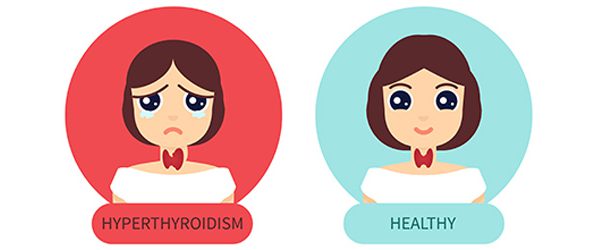
Asthma and allergies are at epidemic proportions in America. They affect so many Americans now that the White House has designated May as Asthma and Allergy Awareness Month. The statistics surrounding these conditions can be overwhelming. In fact, in the past 20 years, according to the Asthma and Allergy Foundation of America (AAFA), the number of Americans with these two chronic conditions has doubled. That brings the current estimate of afflicted people to 60 million. Last year alone, there were approximately two million emergency room visits and nearly half a million hospital stays due to asthma/allergy attacks. On a financial level, the statistics from the AAFA places the enormous cost of treating these conditions at $25 billion annually. The costs are staggering, both in human-suffering and in financial treatment. So, in this month of awareness, the real question is what can be done to reduce and prevent the symptoms (attacks) and financial costs of these devastating diseases.
Prevention and Awareness
While the search for new treatments and ultimately a cure is still underway, prevention and awareness are the best defense against allergy and asthma symptoms.
- Identify and eliminate the triggers in your environment that can cause an allergy or asthma attack. (A list of common triggers is detailed below.)
- Use the correct methods to clean and sanitize your home (e.g., steam cleaners, air purifiers, HEPA-grade vacuums).
- Use preventative and treatment medications. Asthma is a chronic condition, so you should take any preventative medicine prescribed by your doctor as directed. Never stop taking your medicine just because you “feel better.” Asthma symptoms can lie dormant in your system for long periods and only become apparent when triggered.
- Pollen: During allergy season, pollen is the number one culprit for making you sneeze, causing your nose to run, or giving you itchy eyes. Allergies and asthma often times go hand in hand. According to the Asthma and Allergy Foundation of America, about 50% of asthma cases are known as allergic-asthma. In terms of childhood asthma, more than 80% of children who have asthma also suffer from allergies. Therefore, as an asthma sufferer it is crucial to minimize your exposure to pollen, which is so tiny it can remain in the air for long periods of time. Air purifiers, especially those with HEPA filters, are excellent for cleaning the air of pollen.
- Dust Mites: These microorganisms’ waste products are highly irritating to the lungs, and because the waste is so fine it is easily breathed in. Dust mites make their home in upholstered furniture and in bedding. Their waste products are so numerous and light weight that moving, walking, or cleaning can cause them to become airborne and remain there. Allergy bedding, steam cleaning, dehumidifying, and vacuuming will help keep dust mites from finding new residences within your home, but an air purifier can ensure you aren’t breathing their waste in. (For more about dealing with dust mites, see our other articles entitled Dust Mites 101 and Dust Mites and Allergies.)
- Cockroaches: These nasty pests are a serious threat to allergy- and asthma-sufferers. Individuals are allergic to their feces, saliva, and bodies. Cockroach allergens are transferred through the air and settle on hard surfaces. It is extremely important to keep cockroaches from taking up residence in your home because once they are there it is very difficult to get rid of them. According to information from the Asthma and Allergy Foundation of America, for every one roach you see, there are about 800 more roaches hidden behind the walls that you can’t see. So, if you have cockroaches (even if you’ve only seen the one), you must get rid of them. However, refrain from using chemical pest killers, as these can aggravate allergy and asthma symptoms. Contact a professional exterminator to ensure proper eradication. Other tips include cleaning with steam to ensure all cockroach residue is eliminated. Also, a high-quality vacuum and air purifier will keep this allergen out of the air.
- Mildew and Mold: Keeping your home humidity at a balanced level (between 45% and 50%) will keep mold and mildew (a form of mold) from growing and keep those tiny mold spores and bacteria from infecting your air. These pollutants can easily irritate the lungs and cause an asthma attack. A quality dehumidifier will keep your home in ideal balance year round. This will keep you comfortable and worry-free.
- Pet Dander: People and pets are often times inseparable, and if this is the case in your home, you will need to do a bit more maintenance to ensure that the presence of your pet(s) isn’t adversely affecting your asthma or allergies. Bathe pets regularly to remove outside pollutants from their fur; use baby wipes on their fur between washes to help remove pollen, dust, and dirt from their coats. Keep pets off the bed and furniture. Vacuum regularly (at least twice a week at minimum is ideal). Frequent hand-washing and the use of a hand sanitizer will help to keep any amounts of dander from staying in close contact with you. An air purifier will also filter the air of dander.
- Smoke: Smoke is particularly bad for asthma and allergy-sufferers. If tobacco-smoking cannot be avoided completely, it should only be done outside or limited to a single room in the house that can be ventilated from the outside of the house, not through the house. Air purifiers designed to absorb smoke are an excellent choice if you must smoke indoors. These machines are also helpful in absorbing fireplace smoke and cooking smoke. Fireplaces are detrimental for asthmatics because of both the smoke and volatile gases released from burning wood. It is best to avoid using fireplaces if you have asthma.
- Cleaning Products: Cleaning products contain harsh chemicals that saturate the air. These chemicals are dangerous for everyone, but they are particularly dangerous for asthmatics and should be avoided or used minimally. A safe and highly effective alternative to these chemical cleaners is a steamer. These machines can replace virtually every chemical cleaner in your house. They use only tap water and are simple to operate.
- Fragrances: Whether it is scented candles, perfumes, lotions, or air fresheners, the chemicals in these products are very dangerous for asthma sufferers. Candles are detrimental for two reasons: first, they produce smoke and second, they release a chemical scent into the air. Perfumes and lotions should be kept to a minimum. For some people, these items seem necessary but if over used they can prompt an asthma attack. Air fresheners should be avoided all together in the home of an asthma sufferer. These items saturate the air with chemicals to make it smell fresh. Yet, when air is truly clean of pollutants after it has been filtered through an air purifier, there is no artificial smell. (A good rule of thumb to remember when dealing with any chemical is if it gives off a strong smell or fumes, then it can cause an asthma attack. Think of the last time you smelled paint, paint thinners, glues, fertilizers, etc; all items of this nature should be avoided.)
Source: https://www.sylvane.com/asthma-and-allergy-awareness.html



